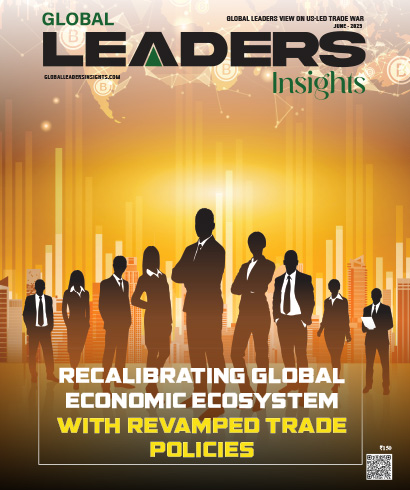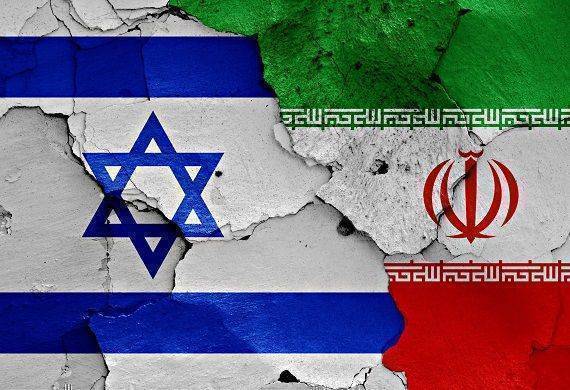How Tariff War is Changing the Fabric of Global Economy - 2025
By Manjunath Vendan, Correspondent at Global Leaders Insights

President Donald Trump’s Tariff war has raised complications and uncertainties all over the world. Global and International trade experienced negative consequences from the Tariff war which influenced the worldwide economy. This explanation needs a fundamental understanding of basics first. What is a Tariff? Nationals tax foreign imports as a duty through tariff enforcement. They basically make imported products more expensive than domestic ones. In recent times, you would have come across news about Donald Trump’s Tariff war. How and why does a Tariff war or Trade wars occur? A Tariff war occurs when one country imposes tariffs, the affected country may retaliate with its own tariffs, resulting into a Trade war. On April 2—a day he called "Liberation Day"—Trump signed an executive order imposing a minimum 10% tariff on all U.S. imports effective April 5th.
“The Tariffs, and Tariffs alone, created this vast wealth for our Country. Then we switched over to Income Tax. We were never so wealthy as during this period. Tariffs will pay off our debt and MAKE AMERICA WEALTHY AGAIN!” Trump said in his Truth Social post.
On April 9, higher import taxes from 57 nations, ranging from 11% to 50%, were supposed to go into effect. However, all countries except China had their tariffs delayed for 90 days nearly immediately. The 10% tariff is still in place. The disclosure of these controversial "reciprocal tariffs" led to a stock market meltdown and retaliation from trading partners. This controversial announcement impacted many countries in numerous ways which sparked some friction around the world. The staggering 145% levy on Chinese goods only made the situation even worst. Some of the issued rates are Cambodia at 49%, Vietnam at 46%, India at 26%, European Union at 20% And United Kingdom at 10%. Let’s dig a little deeper into the impacts and conflicts resulted by this trade war.
Economic Impacts of the Tariff War
- Inflation and consumer price index
According to OECD, Inflation in the United States is expected to increase from 2.5% in 2024 to 2.8% in 2025 as a result of these tariffs. Higher tariff rates leads to higher consumer prices that alter trade dynamics.
- Investment and business unpredictability
Business investment has declined as a result of trade policy uncertainty. With the global economic landscape looking uncertain, there will be low investment opportunities, which will result in slower growth rate and inflation.
- Dip in global trade
Goods that would have arrived from China and other countries will end up in third markets if these tariffs are kept in place for a long period of time. This trade diversion may lead to protectionist pressures in those other nations. The biggest risk is that the effects will spread to other parts of the planet. Countries that depend on other nation’s economy are likely to be the most affected and as a result, they will likely face layoffs, which might extend to the rest of the world. Therefore, these actions are likely to have negative impacts in the long run.
Countries Most Affected
- China
A tariff tit for tat takes place between China and US as response to Trump’s 145% Tariffs, China halts export of rare Earth metal and magnets. The Chinese ports have been filled with halted shipments as Beijing works on new rules and regulations that could potentially block sales to certain American defense contractors. This sudden decision has led to a devastating impact across industries like aerospace, defense and electronics. There has also been an impact in the automobile and robotics industry as they require magnets made with rare earth minerals. This also effects the production of drones and missiles. Trump’s Tariffs which was declared in Early April was originally applied to over 200 countries and territories, however most were given a 90-day delay. Unfortunately, China was not given this time leading to sparks.
“Blocking economic cooperation under various excuses and dividing an interdependent world is going back in history,” according to a speech written by Xi that was delivered on Friday by Chinese Commerce Minister Wang Wentao at the APEC CEO summit in Lima, Peru.
- Vietnam
Vietnam is one of the nations that are highly dependent on exports. Exports to the US contribute around 30% of Vietnam's GDP. With a whopping amount of 46% tariff imposed, Vietnam’s bamboo diplomacy will be put to test, where it attempts to be friends and balance tries with China and US, who are having a tit for tat tariff war. With their export of electronics, textiles and furniture taking a hit, it takes a strain on the on the infrastructure development leading to pressure on its ports and labor market.
Pham Thu Hang, Spokesperson, Ministry of Foreign Affairs stated that “We believe that this decision does not align with the reality of mutually beneficial economic and trade cooperation between the two countries. It fails to reflect the spirit of the Comprehensive Strategic Partnership for peace, stability, cooperation, and development and, if enforced, would negatively impact bilateral economic and trade relations as well as the interests of businesses and people in both countries.”
- India and Asia-Pacific Economies
India faced damage indirectly due to global trade shifts. The implementation of a 26% tariff on Indian imports lead to crashing of Indian stock markets by 4%. The Indian diamond industry, which exports more than one-third of its product to the US, is probably going to be negatively impacted, which could result in layoffs. India operates safely because nations which rely on their national GDP show minimal economic impact.
The financial minister Pankaj Chaudhary stated "Trump follows an 'America first' policy while Prime Minister Modi stands by 'India first,'" which shows how India plans to safeguard its national interests.
Hiren Ved, Director and CIO at Alchemy Capital Management stated "We are the only country that’s been actively engaging with the US on a trade deal since the start of the Trump administration," Ved said. That measured diplomacy, coupled with relatively lower tariffs on Indian goods compared to peers like China, creates a rare window of opportunity for Indian exporters.
In fact, India’s manufacturers could gain meaningful market share, especially as the US imposes much higher tariffs on other Asian economies. "This is a chance for Indian companies to become more relevant in global trade flows," Ved said.
Lower oil prices are another unexpected boost. With global growth forecasts slowing, crude has corrected sharply—a net positive for India, which imports 85 percent of its oil. "Lower oil means lower inflation, and that helps contain the trade deficit," Ved noted.
Cambodia and Thailand have taken harsh hits with imposed tariffs of 49% and 36% has led to disruption in supply chain as regional trade has impacted business confidence and investments leading to currency pressure. Further down are Thailand (36%), Indonesia (32%) and Malaysia (24%). The Philippines gets a tariff of 17%, and Singapore of 10%. For Cambodia, the tariffs might be the greatest political threat in the region. The garment footwear and travel goods industries contribute to almost one-third of Cambodia's economic activity because of American exports to this market. With 750,000 workers, the garment industry has been a vital social safety net, providing the poorest citizens of Cambodia with steady wages. President Trump's tariffs are now likely to result in the loss of thousands of those jobs.
Future Consequences
The tariff wars will hinder the global economy leading to fragmentation and poor efficiency. This in turn will affect the supply chains leading to cost and logistic issues altering global trade patterns. The nail in the coffin would be Recession, which is if trade trends continue to be uncertain. Things might go out of hand when countries join forces to retaliate against nations to attack in non-diplomatic ways. A trade battle might turn into a potential national emergency, heading towards darker times.
Conclusion
The global economy undergoes rapid transformation because of the tariff wars which the United States initiated in 2025. The worldwide economic response includes reduced GDP growth rates together with rising inflation rates and deteriorating international trade connections. There is a risk of long-term economic fragmentation and recession as countries react with their own policies. To maintain the global economic system and stop future decline, coordinated international initiatives might be required.






.jpg)